Channel groups
What is a Channel group?
Channel groups are containers of channels - as the name suggests - and they normally reflect the type of line coming into your organisation and their groupings, e.g. ISDN 30, ISDN2, Analogue Fax lines etc.
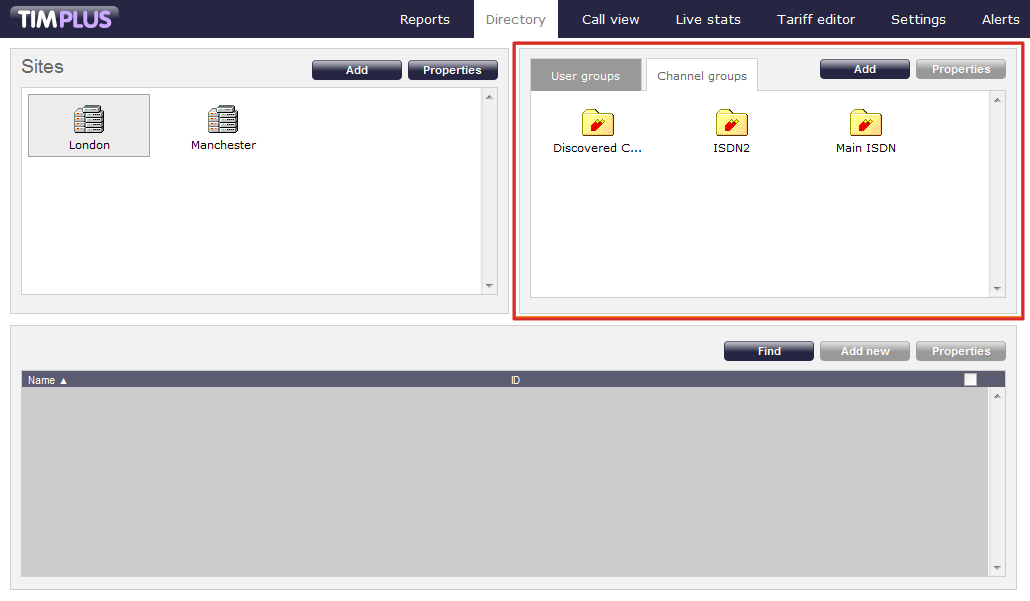
The Discovered Channels folder
When you first configure the system and your channels start to populate the Directory, the Discovered Channels folder is created automatically in the Directory. Its function is to pick up newly discovered channels and it should not be renamed or deleted from the system. Once you have created your own groups, you can move channels from the Discovered Channels folder to the newly created ones. For information on how to move channels from one group to another, refer to the Moving a channel between two groups section.
Adding a Channel group
To add a new channel group to the Directory, click on the button at the top-right of the Groups panel.
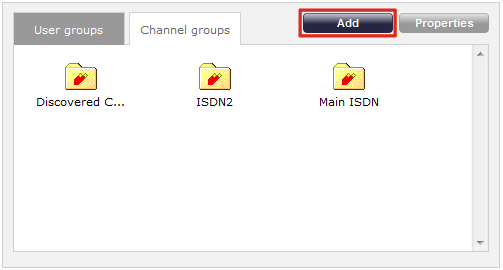
A new window will appear, allowing you to enter the group's name and any the trunk's access code, if applicable.
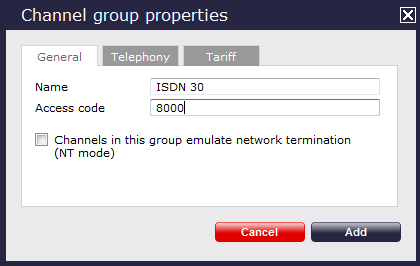
Click on the button to add the new group to the Directory.
If you are synchronising with a third party system, e.g. Cisco AXL, you will automatically pick up the channel groups as they are configured in your phone system. |
Configuring a Channel group
To configure the properties of a channel group, highlight the group you are interested in and click on the button at the top-right corner of the panel:
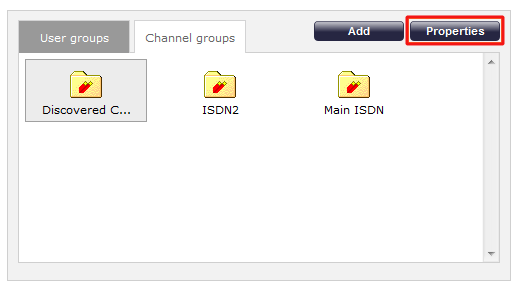
A new window will open, where you can configure the properties of your channel group. Each tab in the Group properties window will be explained below:
General
In the General tab you can enter a name for your channel group - this is normally related to the name by which it is referred to in your organisational directory - and the trunk access code, if applicable.
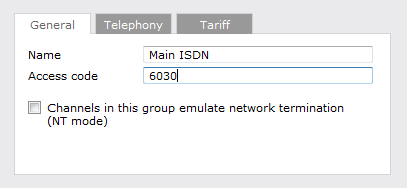
Channels in this group emulate network termination
Tick this box only if you have a call recording option in place and if the currently selected trunk is part of a Private circuit.
Telephony
The Telephony tab gives you the option to exclude the currently selected group from being logged or recorded in the system - assuming a call recording device is attached to TIM Plus. If you do not want calls for this channel group to be logged, recorded or included in call statistics, tick the box provided:

If channels are excluded from call statistics, they will not be counted when looking at call concurrency. |
Tariff
TIM Plus gives you the option to cost different groups of channels at different rates. To apply a different tariff, expand the drop-down list and select from the available options.
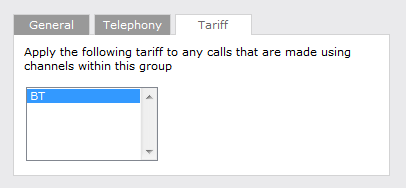
By default, TIM Plus is supplied with a standard BT tariff which will automatically pick up national, international and mobile dial codes. Bespoke tariffs can also be provided on request.
Renaming a Channel group
To rename a channel group, locate the entity in the Directory and click on the tab.

A new window will open, where you can rename the group. Click to apply the changes.
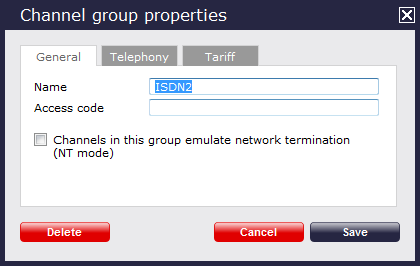
Deleting Channel group
PLEASE NOTE: When you are deleting a channel group, you are deleting all the information contained within that group, including the calls associated with those channels! |
To remove a channel group from the Directory, select the group you want to remove and click on the button. In the new window that opens, you have the option to delete the selected group. You will also be asked to confirm the deletion, in order to prevent groups being deleted accidentally.
